Homepage > News items (2025) - (2024) - (2023) - (2022) - (2021) - (2020) - (2019) - (2018) - (2017)
Monthly news items, video links and blog on the Frans Absil Music website
News Archive 2022
September 2022: Starting tinnitus treatment
Suffering from tinnitus symptoms and hypersensitivity to noise
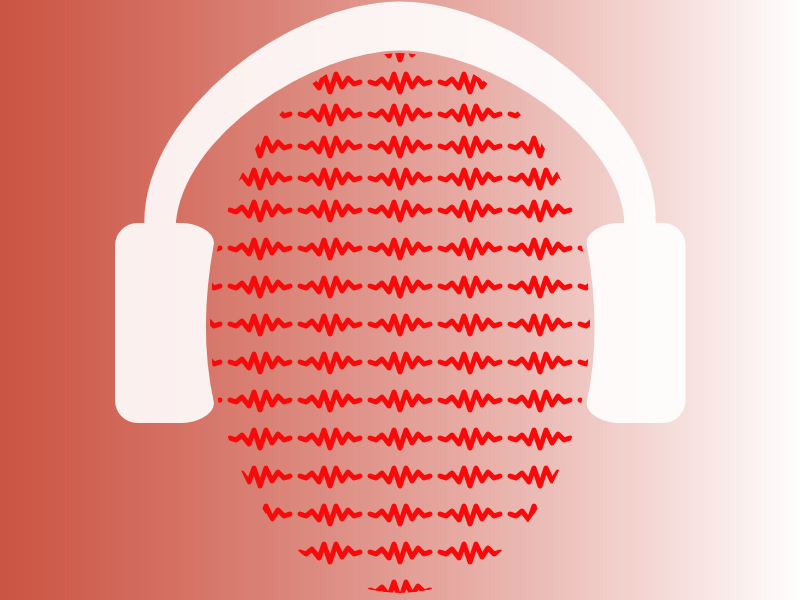 I will start a therapy. This treatment, developed by Maastricht University, consists of cognitive behavioural therapy, which combines psychological components and elements from audiology. The therapy is aimed at reducing negative fear responses with regard to tinnitus symptoms. It consists of 17 training sessions over a three-month period (Sep-Nov 2022). I will report my findings and hopefully my progress in a blog on the Patreon page (no longer available, account terminated).
I will start a therapy. This treatment, developed by Maastricht University, consists of cognitive behavioural therapy, which combines psychological components and elements from audiology. The therapy is aimed at reducing negative fear responses with regard to tinnitus symptoms. It consists of 17 training sessions over a three-month period (Sep-Nov 2022). I will report my findings and hopefully my progress in a blog on the Patreon page (no longer available, account terminated).
On the YouTube channel
watch the video tutorial
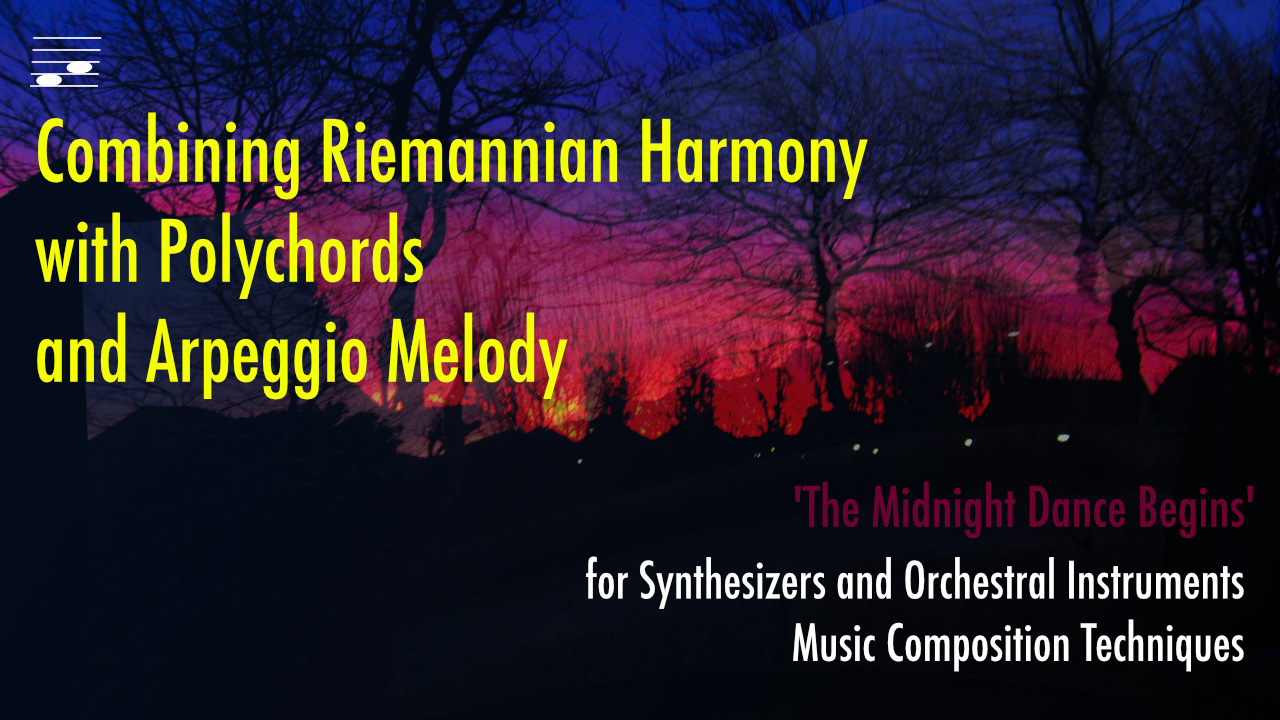 Combining Riemannian Harmony with Polychords and Arpeggio Melody (22:44).
In a short piece for synthesizers and orchestral instruments the starting point is a set of chord progressions, including a Riemannian hexatonic pair. Using a limited set of techniques we create extended harmony with pedal point, or polychords. From these chord structures we derive melody and arpeggio motifs.
There is a companion document in the Webshop >> (A4, PDF, 25 pp.).
For more information see:
'The Midnight Dance Begins' (performance notes and link to full score).
Combining Riemannian Harmony with Polychords and Arpeggio Melody (22:44).
In a short piece for synthesizers and orchestral instruments the starting point is a set of chord progressions, including a Riemannian hexatonic pair. Using a limited set of techniques we create extended harmony with pedal point, or polychords. From these chord structures we derive melody and arpeggio motifs.
There is a companion document in the Webshop >> (A4, PDF, 25 pp.).
For more information see:
'The Midnight Dance Begins' (performance notes and link to full score).
August 2022: Has 'Peak Popularity' been reached?
Spitfire Audio Scoring Competition 2022.
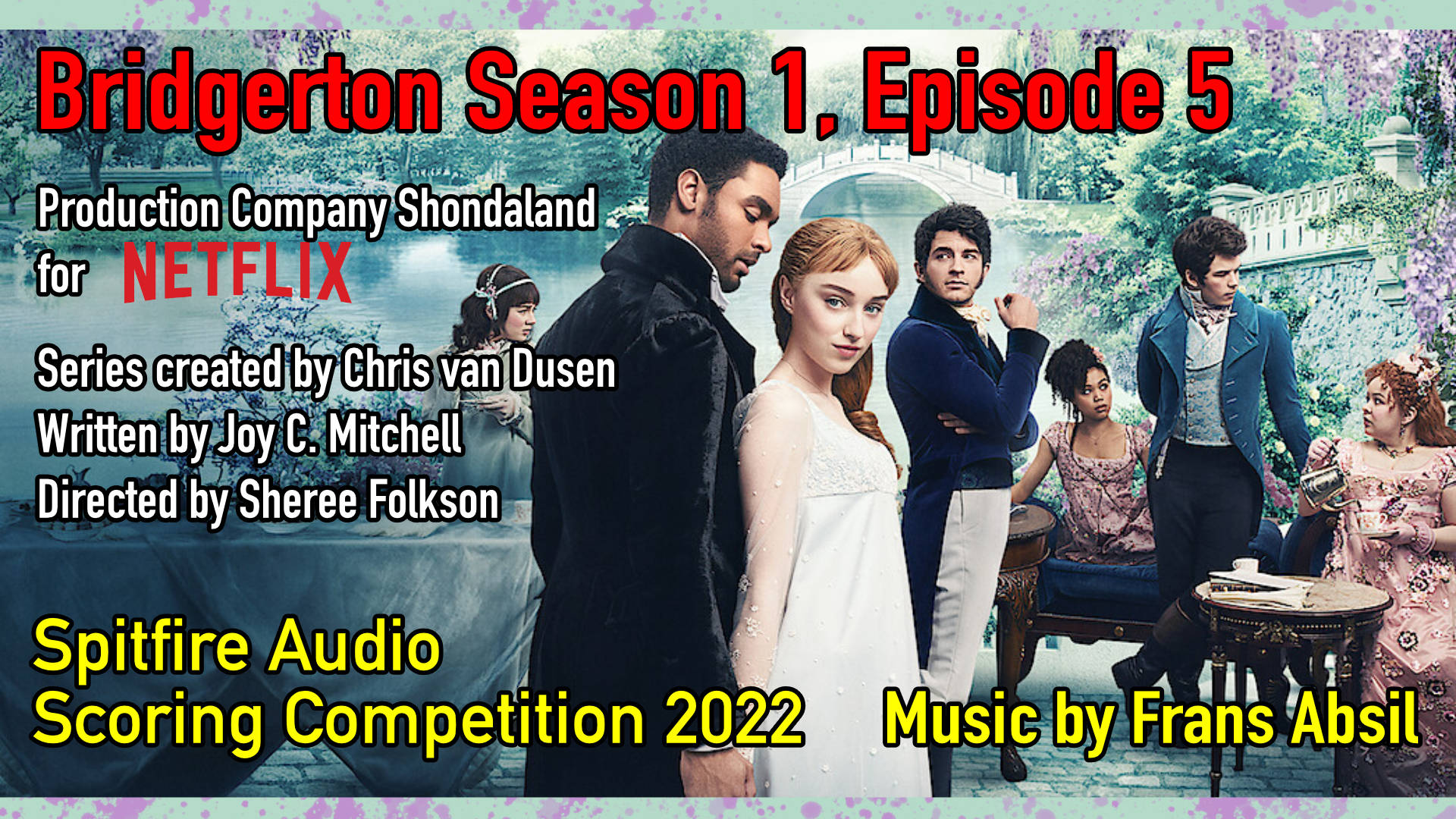 Click the image on the right to watch my competition entry with a new score for the video clip from 'Bridgerton' Season 1, Episode 5. The instrumentation for this historical-romance series (Netflix 2020) set in Regency era London is a late Baroque, Classical period chamber music ensemble, with a concertante clavichord, a wind quintet, brass section, timpani and string quintet.
For more information see:
'The Whistledown Wedding Announcement' (performance notes and link to full score).
Click the image on the right to watch my competition entry with a new score for the video clip from 'Bridgerton' Season 1, Episode 5. The instrumentation for this historical-romance series (Netflix 2020) set in Regency era London is a late Baroque, Classical period chamber music ensemble, with a concertante clavichord, a wind quintet, brass section, timpani and string quintet.
For more information see:
'The Whistledown Wedding Announcement' (performance notes and link to full score).
On July 30, 2022 my YouTube Channel analytics page
 reported the number of 3,333 Subscribers. To me this number nicely represents the current state of the channel. Being aware that the channel content is for a niche interest group, it is an impressive number that has grown continually over the last years. On the other hand the growth rate has decreased significantly over the first half of 2022. The current number is more or less static. So I am wondering about where the channel is going. Has the target viewer group been saturated, in other words, has Peak Popularity been reached? Have the tutorial subjects become irrelevant? Are video structure, level and tempo suboptimal? I feel I put maximum effort in script and source material preparation, and I don't want to change my presentation style and become the next YouTube clown. So currently I am puzzled and doubt whether I will live to see the next higher fascinating subscriber number. Just a thought I wanted to share with my readers and viewers.
reported the number of 3,333 Subscribers. To me this number nicely represents the current state of the channel. Being aware that the channel content is for a niche interest group, it is an impressive number that has grown continually over the last years. On the other hand the growth rate has decreased significantly over the first half of 2022. The current number is more or less static. So I am wondering about where the channel is going. Has the target viewer group been saturated, in other words, has Peak Popularity been reached? Have the tutorial subjects become irrelevant? Are video structure, level and tempo suboptimal? I feel I put maximum effort in script and source material preparation, and I don't want to change my presentation style and become the next YouTube clown. So currently I am puzzled and doubt whether I will live to see the next higher fascinating subscriber number. Just a thought I wanted to share with my readers and viewers.
Over the last three months I uploaded a number of YouTube video tutorials:
- Combining Techniques: Theme Imitation, Diminution, Hocket and Harmonization (17:43). This short example orchestral composition demonstrates various techniques for setting a musical theme or motif;
- Hoquetus Technique: From Isorhythmic Motet to Tchaikovsky and Michel Legrand (16:58). Hocket is the distribution of melody notes over multiple, alternating instruments. The video looks at the Medieval isorhythmic motet Alpha Vibrans Monumentum (c. 1390), the Finale, Mvt. 4 from the Tchaikovsky 6th Symphony (1893), and a Michel Legrand arrangement (1974);
- Composition With Melody and Harmony Derived From Pitch-Class Set 6-7 (20:22). Interpreting PCS 6-7 as a symmetric pitch-scale, we derive Schillinger Melodic Forms, chained into a continuity. From set properties we obtain harmony and chords structures. These elements are combined in a synthesizer orchestral composition example;
- Read more about these and other YouTube videos (descriptions and links).
For these tutorials there are companion documents in the Webshop >>.
<< Previous - Top of page - Next >>
May 2022: New YouTube videos and content for Patrons
This is an update of YouTube channel and Patreon page (the latter is no longer available) content creation over the last two months:
-
Watch the video tutorial
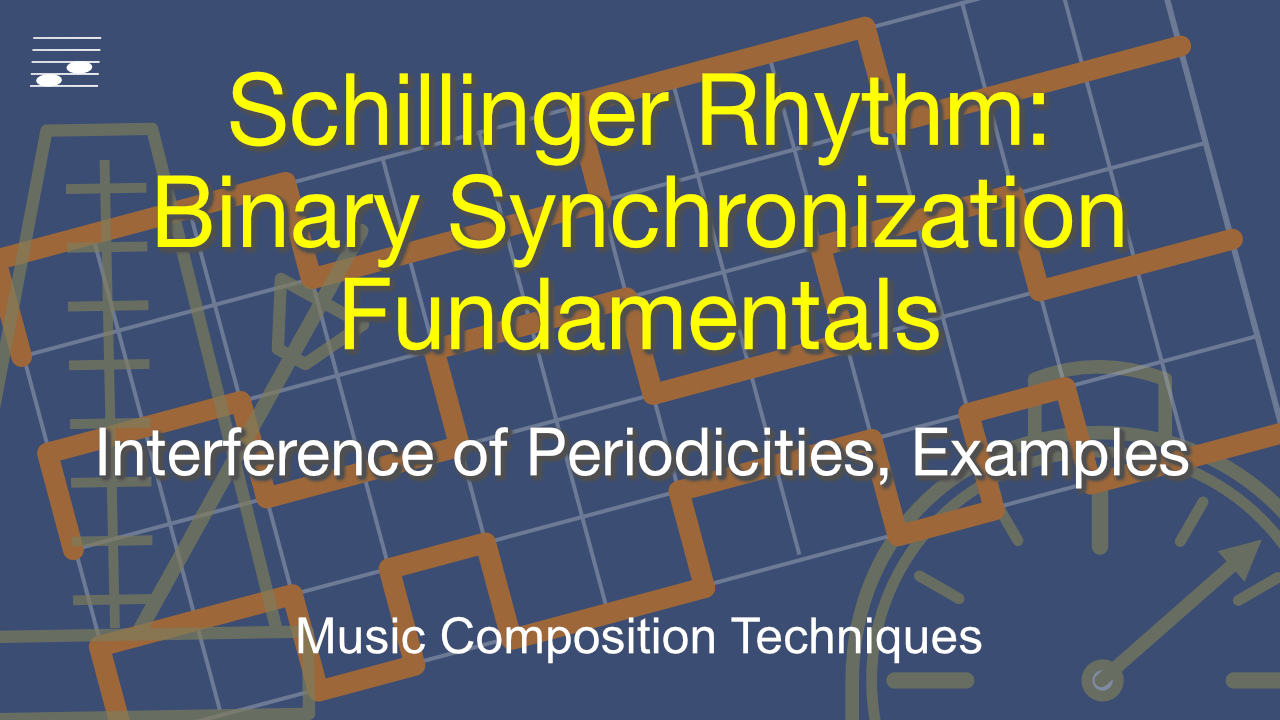 Schillinger Rhythm: Binary Synchronization Fundamentals (20:54). It is an introduction to the Theory of Rhythm from the Schillinger System of Musical Composition. It presents the first three chapters from the book, explaining interference of periodicities, binary synchronization and the grouping technique. These are demonstrated with instrumental form examples. For the companion booklet
visit the Webshop >>(A4, PDF, 20 pp.).
Schillinger Rhythm: Binary Synchronization Fundamentals (20:54). It is an introduction to the Theory of Rhythm from the Schillinger System of Musical Composition. It presents the first three chapters from the book, explaining interference of periodicities, binary synchronization and the grouping technique. These are demonstrated with instrumental form examples. For the companion booklet
visit the Webshop >>(A4, PDF, 20 pp.).
- There is also an instruction video on Articulation Keyswitch Selector Design with Hexler TouchOSC: Generic Template and Application Examples (12:48). Usage for sample library and virtual instrument keyswitching is demonstrated in Logic Pro and Cubase. The relevant files are available for my Patrons (no longer available).
- I would like thank the new members to the Patreon page. Your support of my educational activities in the field of music and the sharing of musician tools on the YouTube channel and this website is greatly appreciated.
<< Previous - Top of page - Next >>
February 2022: Combining Two Harmony Systems tutorial
In the first month of the year:
-
I produced and uploaded a tutorial to the
YouTube channel.
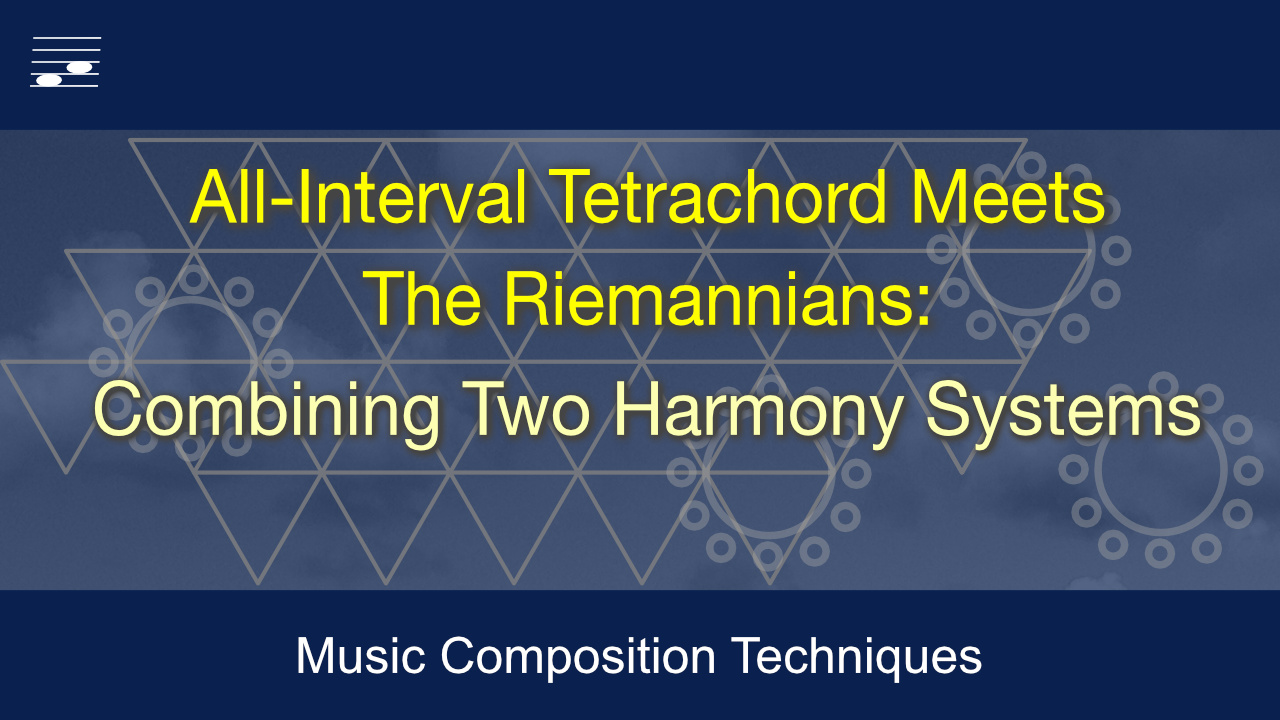 The video
All-Interval Tetrachord Meets The Riemannians: Combining Two Harmony Systems (24:10) discusses the combination of Riemannian Transformation chord progressions
and Pitch-Class Set (PCS) harmony. The Riemannian chord progression is centered around C minor, the PCS sections are based on the all-interval tetrachords 4-Z15 and 4-Z29. A short example orchestral piece demonstrates techniques for obtaining a smooth connection between the two systems.
Find more information and links to the full score (A3, PDF, 11 pp.) and a companion booklet (A4, PDF, 23 pp.) on the
Tetrachordeal Information Page >>
The video
All-Interval Tetrachord Meets The Riemannians: Combining Two Harmony Systems (24:10) discusses the combination of Riemannian Transformation chord progressions
and Pitch-Class Set (PCS) harmony. The Riemannian chord progression is centered around C minor, the PCS sections are based on the all-interval tetrachords 4-Z15 and 4-Z29. A short example orchestral piece demonstrates techniques for obtaining a smooth connection between the two systems.
Find more information and links to the full score (A3, PDF, 11 pp.) and a companion booklet (A4, PDF, 23 pp.) on the
Tetrachordeal Information Page >>
- The YouTube channel has reached the 3,000 subscribers milestone. That is quite an achievement for the set of in-depth videos on the channel and I thank all subscribers for their genuine interest in the content and sincere comments. Thanks, your support is encouraging! Read more about these and other YouTube videos (descriptions and links).
- For the companion booklets visit the Webshop >> A lot of effort goes into the making of the tutorials. Since about a year in addition I have been producing PDF companion booklets for most of the tutorials. These documents contain diagrams, score fragments and a voiceover summary or transcript. Also for most episodes there is a free full score download on this website. This additional material makes understanding the in-depth and concise video tutorials easier. So if you would like to demonstrate your appreciation for the tutorials and the free content and tools on this Website, consider becoming a Patron (no longer an option, account terminated).
<< Previous - Top of page - Next >>
January 2022: Westwood Instruments Scoring Competition and looking back
Final activities in and looking back on the year 2021:
-
On the YouTube channel there are two videos about the Westwood Instruments Scoring Competition 2021.
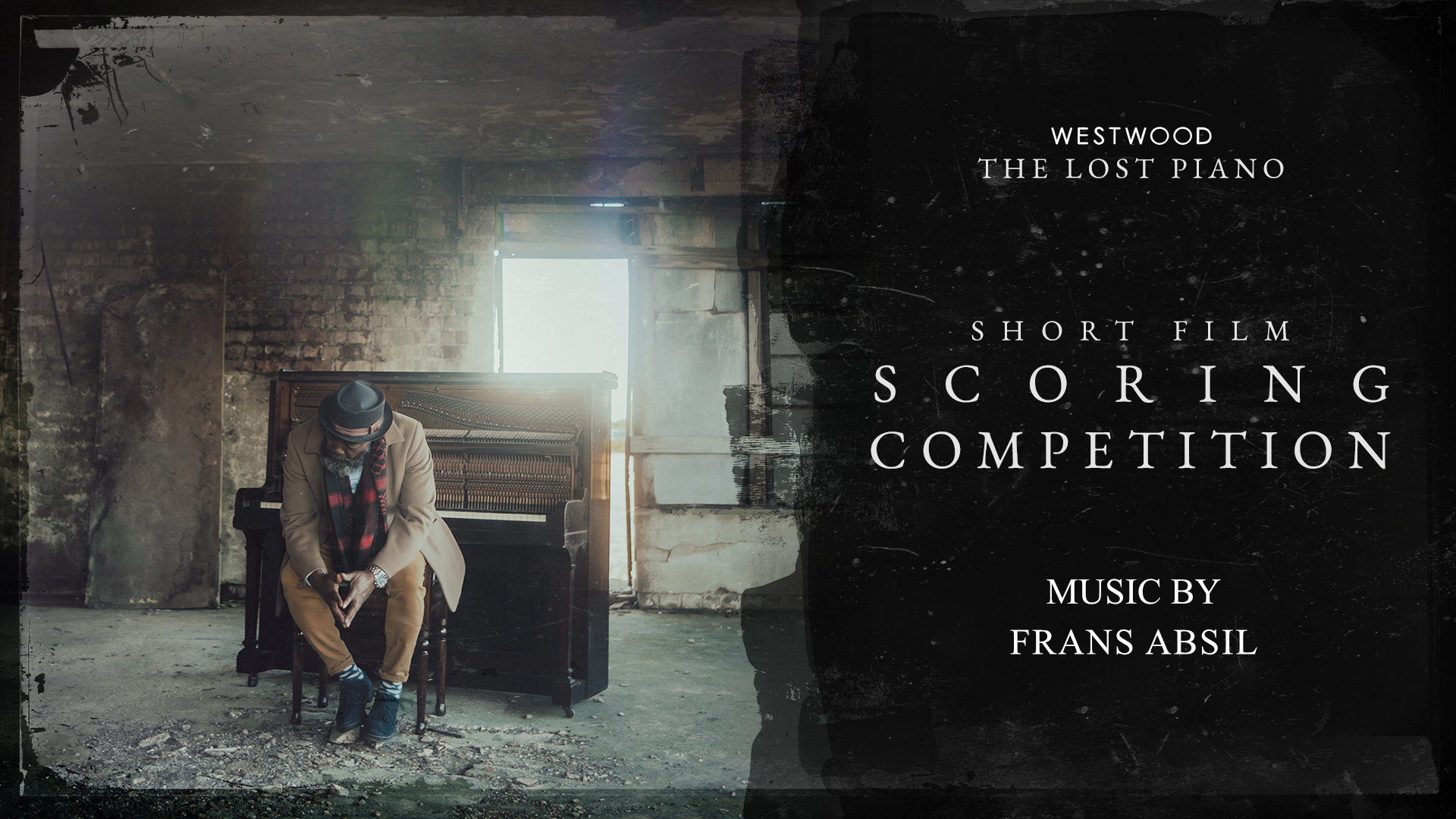 One is the competition entry, the soundtrack for
The Lost Piano (3:49) short film by director Rob Hill. The other is a tutorial
'Dies Irae, two hexachords and a pedal point: The Lost Piano score' (22:03), a kind of "making of", discussing the musical elements in the score and excerpts from the soundtrack.
One is the competition entry, the soundtrack for
The Lost Piano (3:49) short film by director Rob Hill. The other is a tutorial
'Dies Irae, two hexachords and a pedal point: The Lost Piano score' (22:03), a kind of "making of", discussing the musical elements in the score and excerpts from the soundtrack. - There is a full score of this film music cue (A3, PDF, 11 pp.) on this website,
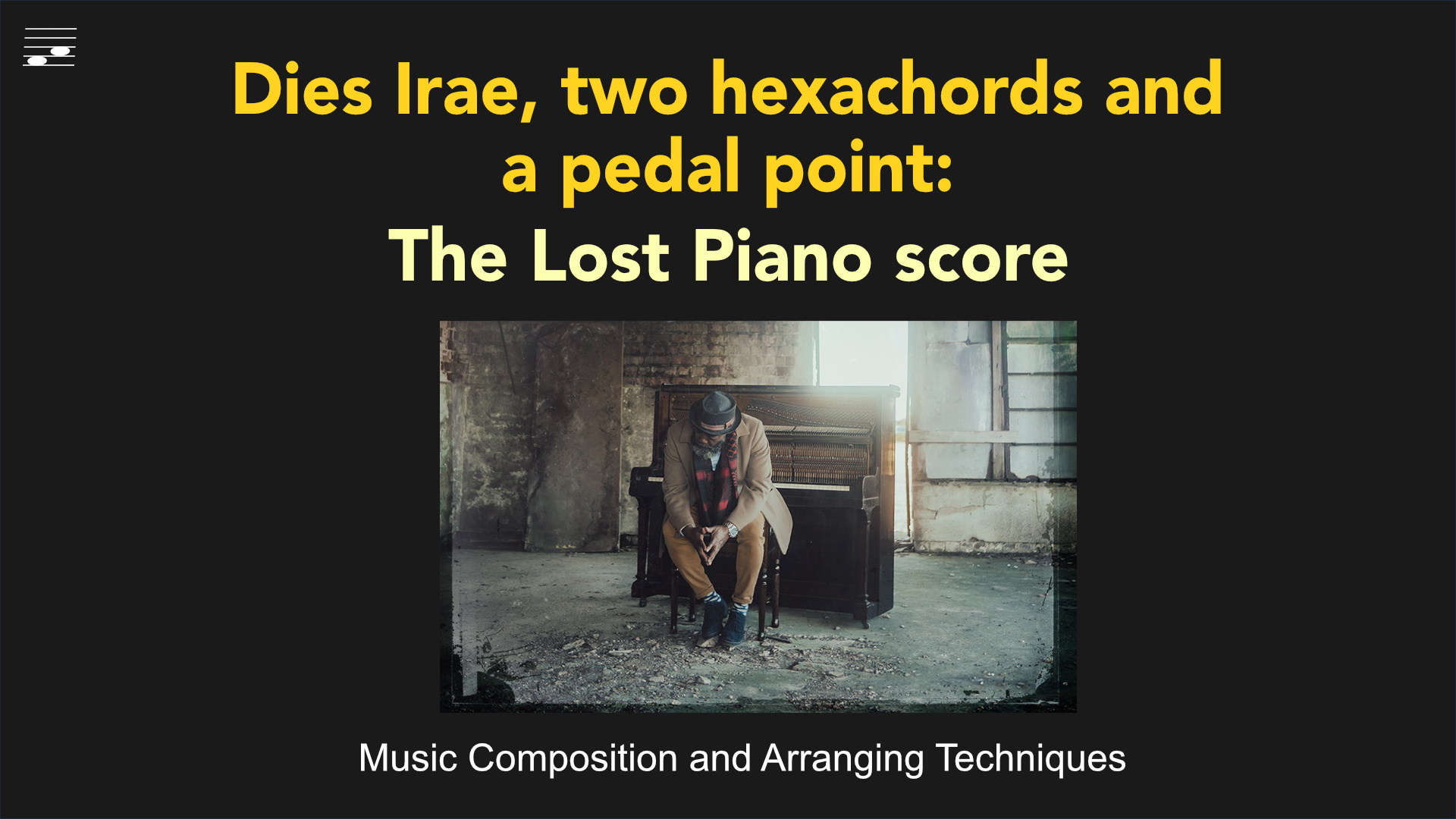 plus a companion booklet with text, diagrams and score fragments (A4, PDF, 17 pp.). You'll find more information on
The Lost Piano Score Information Page >>.
The companion booklet is also listed in the Document Library and is available as PDF download
in the Webshop >>.
plus a companion booklet with text, diagrams and score fragments (A4, PDF, 17 pp.). You'll find more information on
The Lost Piano Score Information Page >>.
The companion booklet is also listed in the Document Library and is available as PDF download
in the Webshop >>.
- In October 2021 I finished a composition, with music video and SoundCloud audio:
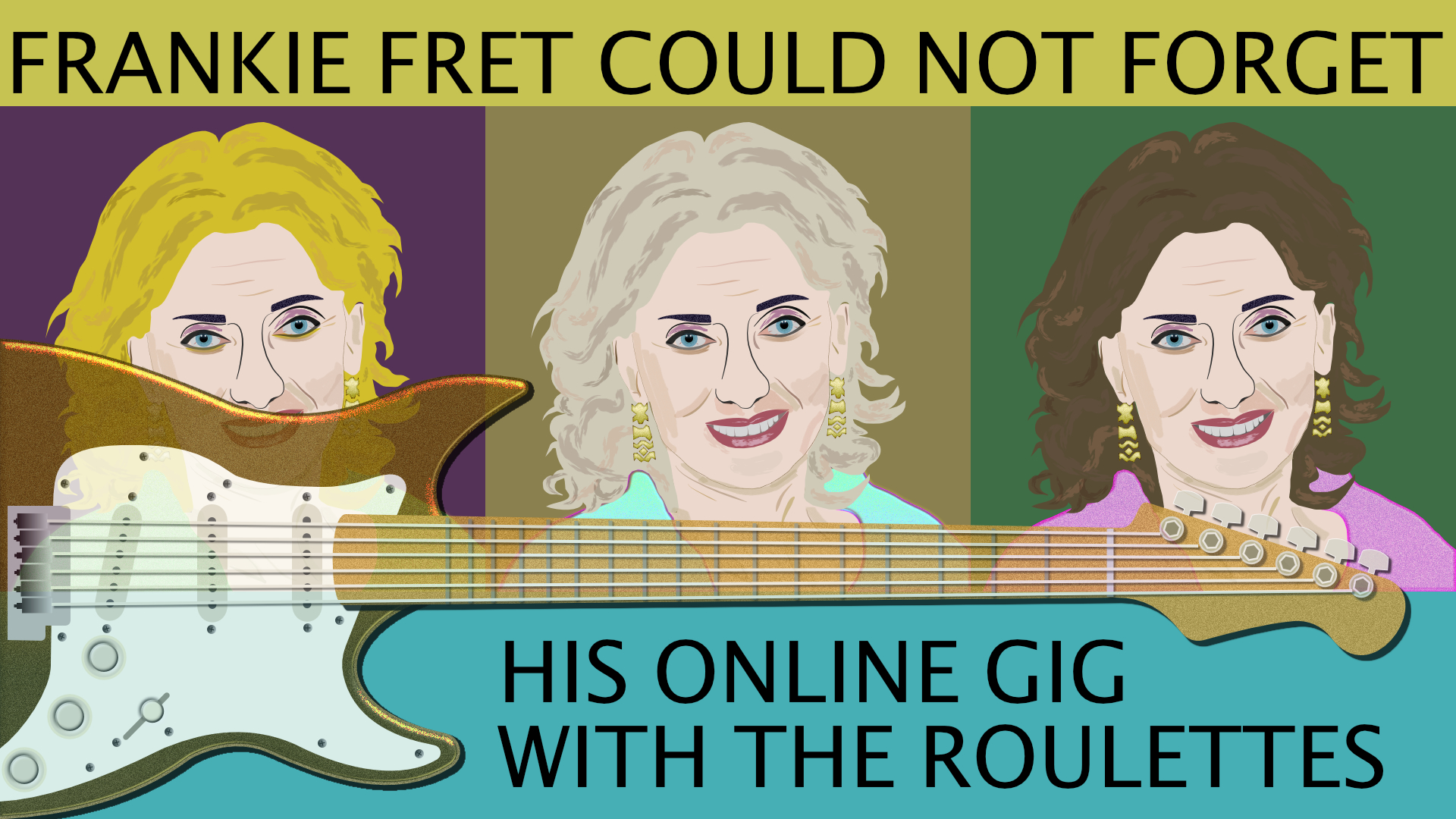 Frankie Fret Could Not Forget His Online Gig With The Roulettes (4:47).
This composition is for studio orchestra, with ternary form ABA. The basic tempo is 124 BPM, time signature 4/4. There is a full score and more information on this
Frankie Fret Composition Information Page >>.
Or go to the full
List of Compositions >>
Frankie Fret Could Not Forget His Online Gig With The Roulettes (4:47).
This composition is for studio orchestra, with ternary form ABA. The basic tempo is 124 BPM, time signature 4/4. There is a full score and more information on this
Frankie Fret Composition Information Page >>.
Or go to the full
List of Compositions >>
- Looking back on another Covid pandemic year implies contemplating the tragic fate of so many independent and creative musicians and artists. These are in need of all public and private support they can get, and desperate to return to the performing stage. The pandemic fortunately has not affected my online activities. The YouTube channel audience is growing steadily, as is the number of requests for online teaching. Earlier in the year I reported my move to a second music computer: a powerful PC next to the existing Mac. Has it been worth the effort? Yes, in the sense that the new machine does handle larger projects and quickly loads huge sample libraries. But the transition to PC, involving software installation, preset and personal settings transfer, took many, many hours (hundreds). Yes, I am a nerd, and log all installation and update steps, keep track of where everything gets installed, and create text files with problem solving tricks and tips. But, unfortunately I am still faced with regular hanging and crashing music software (no significant difference between PC and Mac). I guess my problem solving time fraction has increased to 50%. Maintenance of two music computers with different operating systems is a pain, and I would now strongly advise against it. Looking forward: stay safe, I wholeheartedly wish you all a healthy, creative, prosperous and Happy New Year!
